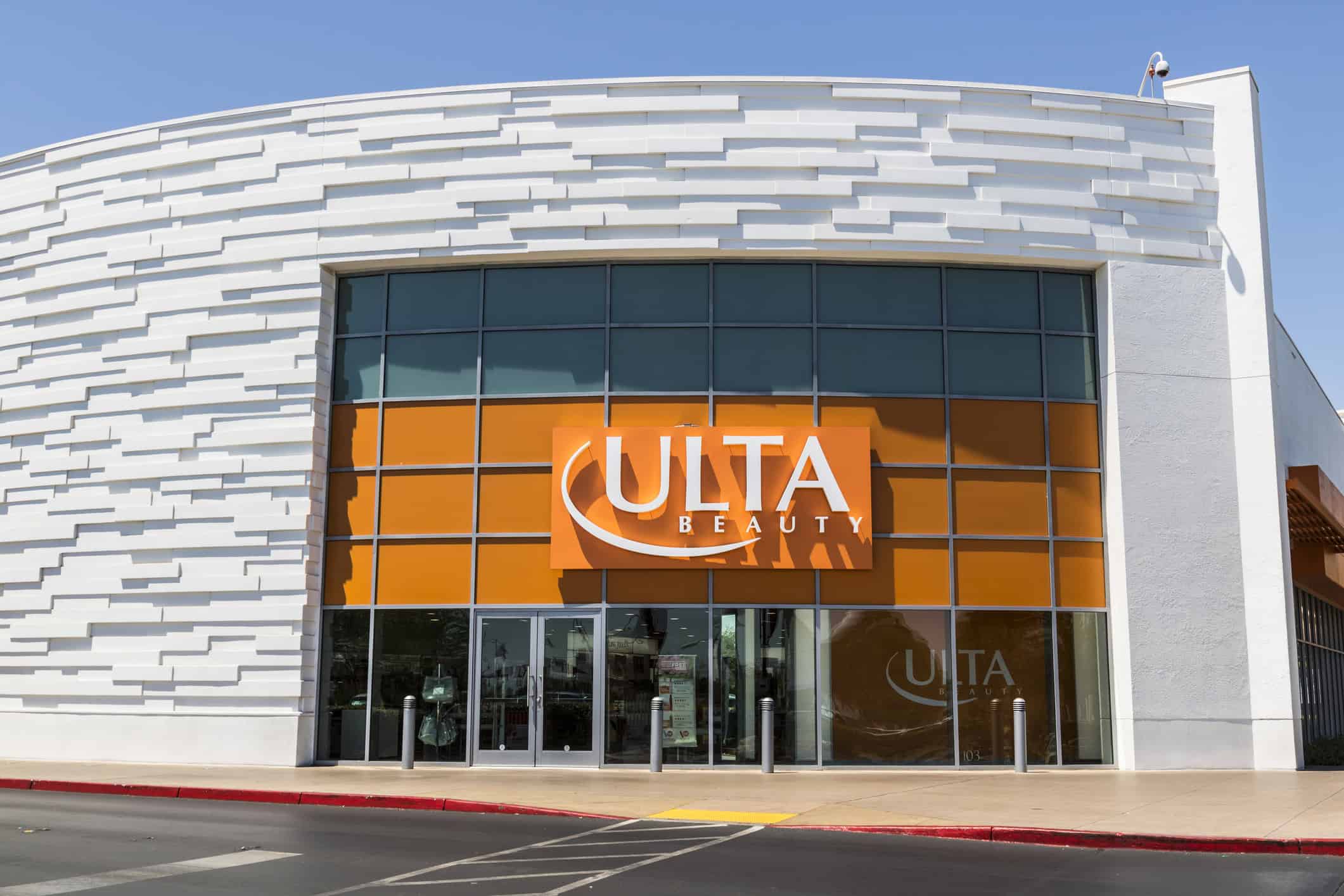
iStock.com/jetcityimage
September 4, 2024
Why Are ERP Implementations So Hazardous?
Ulta Beauty has become the latest firm to face snags caused by the rollout of a new ERP (enterprise resource planning) system.
On its second-quarter analyst call, Ulta officials said updating key store systems starting in March across its more than 1,400 stores forced teams to manage dual systems, adding complexities within purchasing, store allocation, as well as planning processes and systems.
“We are pleased to have successfully completed this important phase, but we have experienced some unexpected operational challenges as our teams have adjusted to new capabilities, new processes, and new ways of working associated with the new systems,” CEO Dave Kimbell told analysts.
Some related store inventory allocation disruption was part of the reason for Ulta’s sales shortfall in the second quarter. Kimbell added, “With all of our stores and DCs now operating on the same core systems, we are shifting from implementation to system optimization and are working quickly to help our teams navigate these new ways of working in order to balance inventories across the network and deliver an optimized guest experience.”
To minimize future disruption, Ulta identified key legacy processes that are creating friction and implemented proactive monitoring. Kimbell concluded, “I am confident that our new capabilities will support better, more agile decision-making in the future.”
Panorama Consulting Group, which regularly surveys businesses on the outcomes of their ERP projects, showed in its 2023 ERP Report that 83% of projects met ROI expectations a year or more after going live.
However, the internet is full of advice on executing ERP implementations, with many of the benefits arriving later than expected or causing minor to major complications. Consumer-related firms cited in case studies around failed ERP implementation projects include Target, Hershey, Lidl, Revlon, J&J Snack Foods, Avon, and Nike.
According to cloud-based ERP system provider Velosio, six common ERP challenges are:
- Lack of vision
- Resistance to change
- Integrating systems and processes
- Skills shortages
- Data migration
- Poor project planning and management
Gartner estimates that by 2027, over 70% of recently launched ERP initiatives will fail to fully achieve their initial business case objectives, with as many as a quarter of these expected to “fail catastrophically.”
Gartner pointed to recent research showing that 75% of ERP strategies “are not strongly aligned with overall business strategy, leading to confusion and lackluster results. This scenario makes it even more important to create a clear ERP strategy and set of principles to assess the fitness of new technologies to the projected business strategy outcomes — and answers the key question from business stakeholders of ‘what’s in it for us?’”
Paul Saunders, SAP chief evangelist for Cloud ERP, wrote in a Forbes column on digital transformations, “Meeting the expectations of a wide group of stakeholders and transforming how a company meets the needs of its customers, partners, and employees now and in the future cannot be accomplished with technology alone. It requires the formation of a common culture and mindset that inspires everyone within the organization to work to meet its goals. It also necessitates identifying what truly differentiates the organization to its customers and then building and delivering differentiated capabilities on top of standardized processes.”
Discussion Questions
What are the primary reasons ERP projects or digital transformations underperform targets or outright fail?
What factors can help ensure a successful ERP implementation?
Poll
BrainTrust
John Lietsch
CEO/Founder, Align Business Consulting
Jamie Tenser
Retail Tech Marketing Strategist | B2B Expert Storytelling™ Guru | President, VSN Media LLC
Frank Margolis
Executive Director, Growth Marketing & Business Development, Toshiba Global Commerce Solutions
Recent Discussions







Most retailers operate with a mix of legacy systems which are usually disparate and unintegrated. There can also be a siloed approach to using these systems. Since ERP is about consolidation, an enormous amount of communication and planning is needed to ensure everything can be brought together in a way that does not cause disruption. That alone is a very difficult. On top of this, as things are consolidated all kinds of unforeseen problems can arise with data quality, training requirements and so forth. ERP can be worth it, but it is very rarely an easy process.
Replacing a variety of niche systems with a single integrated solution sounds like a great opportunity to simplify and optimize operations. It also means nearly every process (and person) will be impacted. Those changes, along with the new technologies, almost always cause a significant level of disruption.
Top-down support, ongoing communication, and coordination across all functions can smooth implementation issues.
This. Do your due diligence. Clean and validate your data. Test, test, test. Run, monitor and measure carefully when running parallel systems and consider everything down the line that might (or might not) be impacted. And yes communicate (and over communicate in some cases) any issues , version transitions and such. Companies have the best intentions, but we all know , in more instance than not, it’s not all wine and roses when we look reality sets in….
The reason that so many retailers run into this problem is that they delay new system implementation as long as possible, leaving them with few desirable options when migration inevitably must occur. Their best bet is to partner with a full-stack solution provider who can provide a modular solution, which can be adopted on a microservice level, as the retailer’s budget and IT system can manage. A proper migration is a 2-3 year journey, ending with a scalable platform that shares data across all its endpoints.
The retail industry in North America has a poor track record implementing ERP platforms, over the years. I am aware of just three notable exceptions in the supermarket sector. All were hard-fought.
While it makes intuitive sense to operate the business under a unified data umbrella, many retailers are stymied by the transition from a collection of best-of-breed solutions for operations, warehousing, distribution, merchandising, buying, finance, pricing, forecasting, real estate, HR, CRM, store management, etc.
To compound matters, ERP platforms have tended to be conceived around the needs of manufacturing enterprises. Retail has a customer service component too. When the requirement of the platform dictate changes in ways of working, pushback is common. It takes years to switch over and the business must be operated successfully during the transition.
Ultimately the transition to ERP for many retailers is akin to rebuilding an aircraft engine while the plane is in mid-flight.
The reasons ERP projects and digital transformations underperform are as simple as those projects are complicated and badly underestimated.
Think of the project as a single system that has been growing for years, maybe decades, with incomprehensible and often undocumented system changes and manual workarounds. And now imagine just ripping out that system and sticking in a new one – Hanging Wires! A lot of “wires” will be missed because it’s just not possible to find them all especially when a project is time, budget and “stock price” bound.
And part of the reason you can’t find all the wires is because most of that knowledge lives in the minds of SMEs (subject matter experts), provided they’re still around, and those SMEs have full time jobs and generally don’t want to add-on the “full time job” of supporting an ERP implementation.
And that makes it easier to customize the new ERP system to accept old, broken, legacy processes instead of adopting the best-practice processes inherent in ERP systems – ironically, often the reason for the switch. It’s like moving the garbage to your new house!
But if I had to pick two reasons from the article I’d choose Sanders “technology alone” and Velosio’s “Poor Planning and Project Management.” If Sanders were stuck in traffic in a Prius and wanted to go faster and a consulting company built him a Ferrari, he would be stuck in traffic in a Ferrari. Great tech! Wrong problem! And I think if companies invested the necessary resources and time to planning and project management and they approached it honestly and without the fear and egos that often accompany these projects, we’d see better decisions around other ERP project killing decisions like Big Bang versus Phased.
New ERP systems are causing snags for retailers. One potential solution is providing comprehensive training programs for employees to ensure they are well-versed in the new system.
It is often difficult for retailers to integrate new ERP systems because of their complexity and scale. In addition, there may be significant downtime during the transition period, resulting in disruptions to operations and customer service. Finally, the costs of implementation and on-going maintenance can be substantial for many companies.
Additionally, retailers can implement phased rollouts to gradually integrate the ERP system, minimizing disruptions. Regularly scheduled maintenance and updates can also help to address and prevent technical issues.
Despite these challenges, new ERP systems can offer long-term advantages such as improved efficiency and streamlined operations. Enhanced data analytics capabilities allow for better decision-making and more accurate forecasting. Over time, these benefits can lead to increased profitability and a stronger competitive edge in the market. – Db
Can you say been there, done all of that! ERP implementations are a lot like building a house, you cannot rush to get the goods (the final system) when you have no idea who the builder is. Just as you’d carefully choose a builder who understands your vision and can lay a strong foundation, ERP projects require careful thought and a “pack filled with patience” to ensure long-term success. Rushing through this process is like moving into a house that’s barely built. Sure, you may have walls up, but the cracks will show, and costly repairs will follow.
ERP systems, or core merchandising solutions for retailers, are foundational enablers for other capabilities. With focus on item management, hierarchies, purchasing, and inventory control, most ERP projects do not have significant ROI expectations on their own. But without solid core systems, the high-value solutions like forecasting, planning, and fulfillment will not be successful, and true unified commerce will not be achievable.
ERP projects are hard because they involve processes and roles that are typically entrenched for years in a way of working, and change is hard. Data is messy. It takes commitment and requires acute attention to detail. It is not a systems project, but rather a business enablement initiative, and it must have strong business sponsorship. Beyond data and integration, success requires a deep focus in processes, people, and training.
The rewards may well be worth the pain of implementation, but there are definitely “watch outs” along the way. The following are among the most common challenges:
1) Resistance to change – habits are difficult to change and adapting a new ERP system to old ways limits the value in the new system.
2) Data integrity – the adage “garbage in/garbage out” is at the root of much of the angst when converting to an ERP system. Starting with disparate an unvetted data is a recipe for failure.
3) Unrealistic expectations – ERP conversions take time (and money). Those who try to shorten the timeframe may suffer from unprepared users, rushed decisions, and short-circuited migration.
A systems heart/lung transplant is how I think about ERP replacements. I’ve lived through a few of these over the years. My experience, the keys to success:
One caveat to keep in mind: What parts of your systems portfolio support capabilities that are competitive advantages? Where is the “secret sauce?” Ensuring these capabilities are protected and supported after the ERP project is over is essential.
Great analogy with heart/lung for ERP. I’ve said for years that buying/merchandising is the brain of retail, POS/store platform the heart. Both a very complicated to transplant however you look at it.
There has been a relentless race for retailers to keep up with the rapid pace of change and provide their teams with the data and capabilities they need to deliver outstanding customer experiences while the applications are part of an antiquated and unsupported ERP mainframe system.
Retailers, in particular, are saddled with significant technical debt, outdated mainframes, and unsupported suites of applications and are challenged to keep up with the relentless pace of innovation and technological advancements. There is this meme that all of the latest GenAI innovations and technology capabilities are being supported by a retired Cobol programmer who is keeping the AS400 ERP systems afloat. Retailers have such complex architectures and applications suites that were built for a different age. It is extremely challenging and risky for retailers to continue to maintain and manage a suite of applications that are siloed and unintegrated.
Legacy retailers have faced significant in keeping their day-to-day operations afloat, running seamlessly, and providing real-time inventory and transactional data supported by legacy ERP and mainframe solutions that are not cloud-optimized. The risk of doing nothing and avoiding the critical modernization path with both the mainframe/ERP solutions as well as the application suite is far more significant than actually building a 2-3 year transformation plan that will lead to a far more resilient, scalable, optimized, cost-efficient and agile path.
There are many considerations that legacy retailers need to analyze before taking these next critical steps, which include:
There are two types of ERP implementation failures; one is that the ERP solution itself is not what the business expected, the functionality may not be right for the business, frustration ensues, and the ROI is not realized. The second type is a technical failure, the reasons for which have already been stated in the foreword. They include all of the bullets in the survey. Strong project management is the primary factor in the outcome of the technical implementation. Open dialogue and written communication, clearly stating the implementation strategy (not the tactics) and setting the realistic expectations long before the tactics begin are part of managing the project. When the business understands what will happen, what it will get and what it will not get from the new ERP, or when, ar integral parts of managing the implementation project, but clearly, not the only ones.
Ever lived through a full house rehab or an automobile restoration? Ever talk to the carpenters, electricians, plumbers and mechanics about the problems and frustrations encountered? Ever been able to plan a project with that level of complexity so that no unforeseen problems arose? I suspect not. It’s the nature of the beast, on steroids. Is it possible that the ease of installing a new ERP program is oversold? I suspect so. There should be zero surprise about the complexity involved and the potholes that will be encountered.
So … you’re saying the whole home renovation we just started is not going to go perfectly?
Buckle in…
It’s been a few years, however, based on exposure to many ERP implementations in the past – both as client and provider, the three biggest challenges were:
If you deal with the above, your chances of a successful implementation and ROI increase dramatically.
Technology companies love to sell “Transformation” and forward thinking executive leadership like to see themselves as “transformative” leaders. What gets left out are the dull parts that play a critical role: planning and implementation. And, I suspect, because of the high costs of these new systems, it is very easy to fall into the age old trap of over promising and under delivering.
This dilemma is compounded by the fact that there is usually no end of life for swapping out these systems in a phased way. Which is the reason there are so many legacy systems (Still!) that run crucial processes on old software and hardware.
Ulta leadership can find some cover in the fact that they are certainly not the first and will not be the last to fall into this trap!
There is a big difference between a new ERP implementation and digital transformation. The former is a tool, the latter is an enterprise-wide shift in operations. I would also add that we are far beyond the era of “digital transformation” and today it’s more about digital “enablement.”
ERP projects fail because companies lack clear goals. There is also resistance to change and poor planning make it hard for teams to adapt.
Companies often push technology without fixing underlying process issues that actually leading to chaos. To succeed, businesses must align ERP goals with their overall strategy, train teams effectively, and be realistic about the time and effort needed.
Leadership needs to be fully engaged and ready to guide employees through the transition, rather than just assuming technology will solve everything. It’s about people and process, not just software.